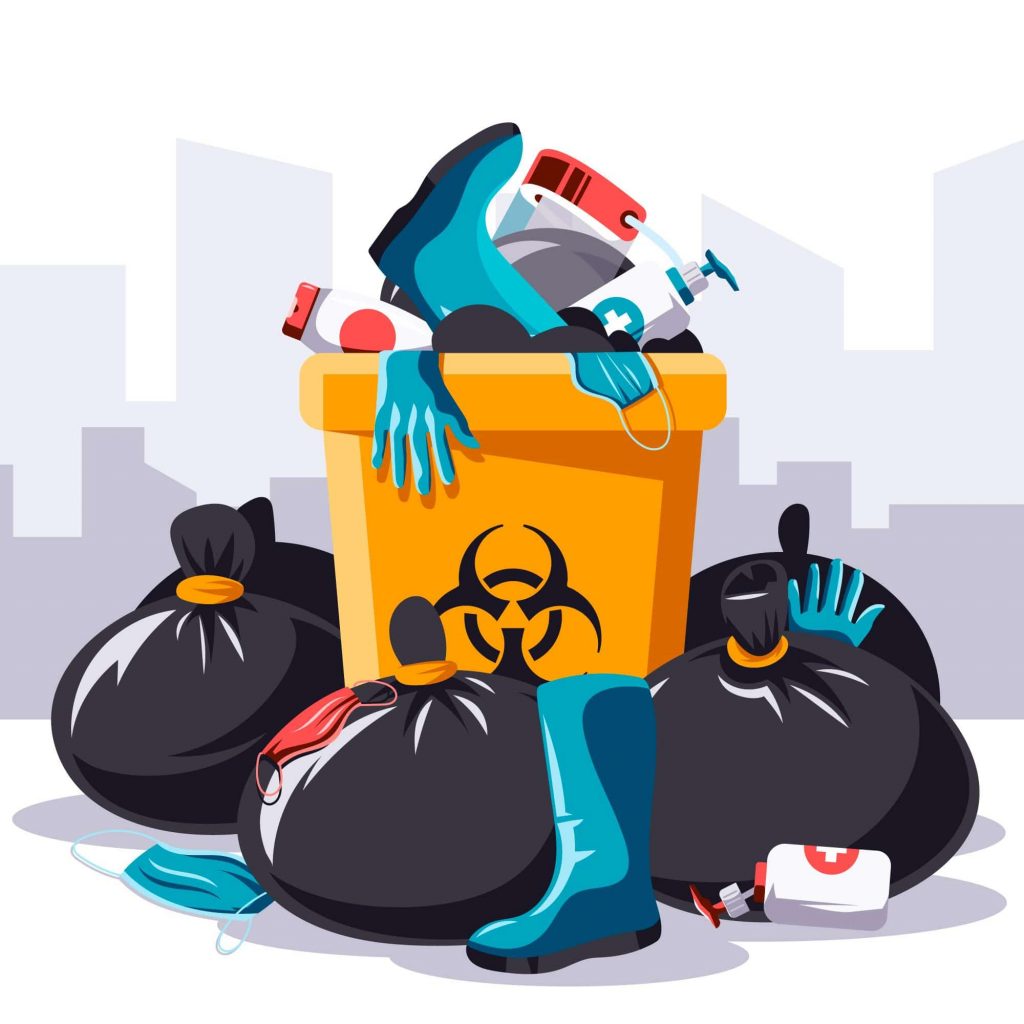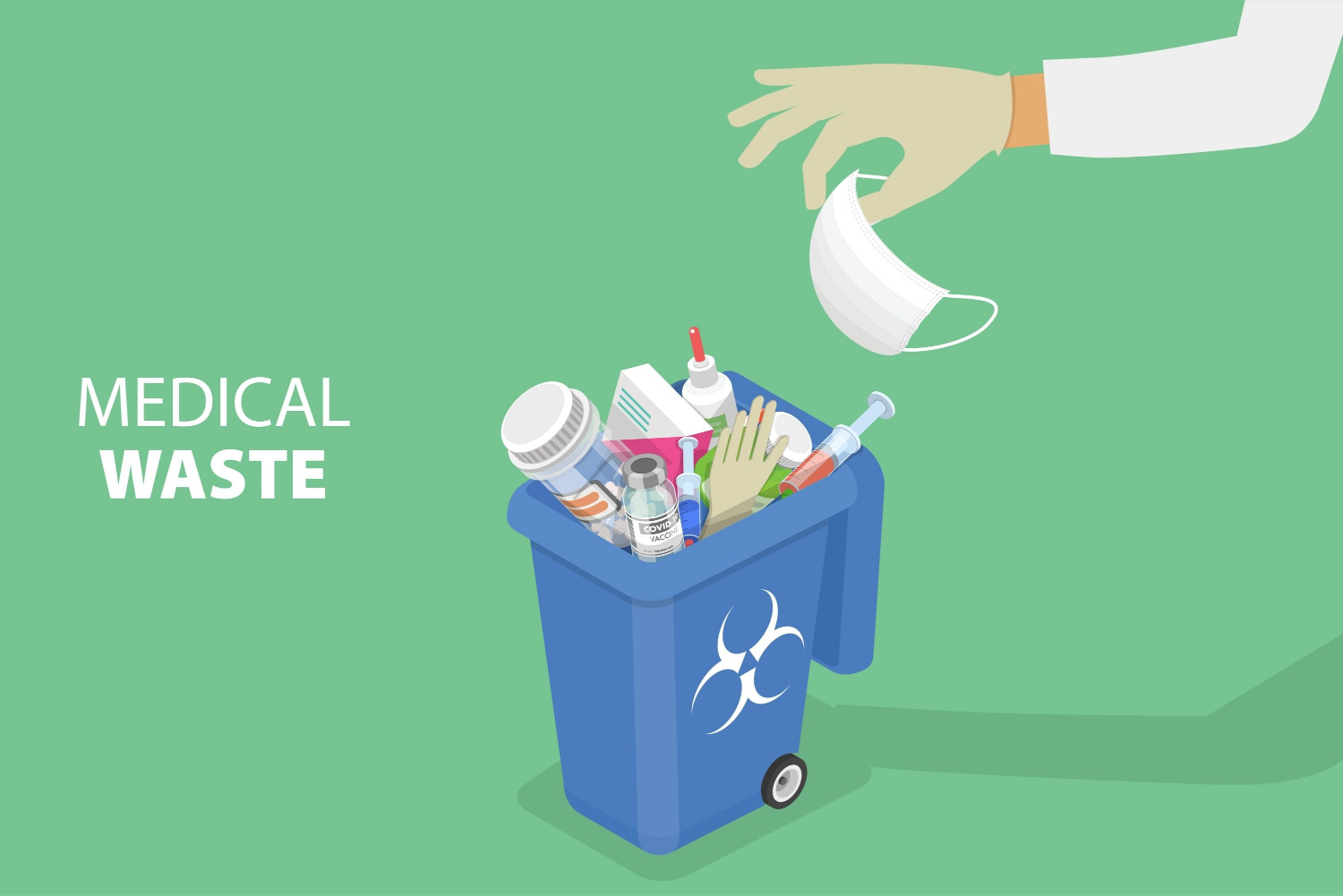Efficient Approaches of Medical Waste Disposal
Effective methods of clinical garbage disposal are important in keeping public wellness and ecological safety. Medical waste, consisting of sharps, pathological waste, and pharmaceutical waste, need to be handled and dealt with appropriately to stop the spread of infections and protect the environment. This requires adherence to strict policies and the application of expert waste monitoring methods.
Correct partition of clinical waste, secure and safe storage space, reliable therapy and sanitation techniques, and environmentally-friendly disposal choices are key components of an effective medical waste disposal system. Professional waste monitoring solutions play an important role in guaranteeing compliance with policies and minimizing the risks connected with improper disposal. By employing these techniques, health care facilities can add to a much safer and cleaner atmosphere while protecting the well-being of the area.
Correct Segregation of Clinical Waste
Correct segregation of medical waste is vital for making sure the risk-free and efficient disposal of these possibly dangerous products. Clinical waste refers to any kind of waste generated during healthcare tasks, such as health centers, centers, labs, and study facilities. It includes a vast array of products, such as utilized needles, syringes, contaminated dressings, ran out or unused medications, and organic materials.
By setting apart medical waste, medical care facilities can reduce the risk of infections, injuries, and environmental contamination. The procedure includes classifying waste right into different kinds, such as sharps, contagious waste, pharmaceutical waste, and non-hazardous waste. Each kind requires details handling, packaging, and disposal techniques to prevent exposure to medical care workers, waste administration personnel, and the public.
To make sure proper partition, medical care facilities must create clear guidelines and provide ample training to team member. This includes informing employees on the various waste classifications, appropriate product packaging methods, and making use of proper containers - WasteX Medical Waste Disposal. Additionally, clear signs and color-coding systems can be executed to facilitate the identification and partition of various waste types
Safe and Secure Storage Space of Medical Waste
Safe and secure storage space of clinical waste is critical for keeping the integrity and containment of possibly harmful products. Correct storage space not just protects medical care employees and the public from direct exposure to dangerous compounds yet also protects against environmental contamination.
To make sure secure storage, medical facilities should stick to specific guidelines. Waste must be kept in puncture-resistant and leak-proof containers that are classified properly. These containers ought to be firmly sealed to stop any kind of leak or spills. Furthermore, the storage area must be inaccessible and protected to unapproved personnel, reducing the danger of accidental exposure.
Appropriate partition of medical waste is additionally essential for risk-free storage. Various kinds of waste, such as sharps, transmittable materials, and pharmaceutical waste, need to be divided to avoid cross-contamination. This segregation can be accomplished via the usage of color-coded containers or containers.
Normal monitoring and evaluation of the storage area are essential to recognize any kind of prospective threats or violations. This consists of monitoring for indicators of damage or damage in the containers, guaranteeing correct ventilation, and checking temperature and moisture levels.
Efficient Therapy and Sanitation Techniques

One typically utilized therapy approach is autoclaving, which involves subjecting the waste to high-pressure steam at temperatures above 121 degrees Celsius. This procedure effectively kills bacteria and ruins infectious representatives, providing the waste safe for further disposal. One more technique is incineration, which includes shedding the waste at high temperatures. Incineration not only gets rid of bacteria however likewise lowers the waste quantity through combustion.
Chemical sanitation is one more effective approach for dealing with medical waste. This approach Discover More Here includes using anti-bacterials such as chlorine compounds, phenolic compounds, or hydrogen peroxide to eliminate or inactivate virus (WasteX Medical Waste Disposal). Chemical sanitation is frequently made use of for liquid waste, such as laboratory examples or bodily liquids
In recent years, different therapy methods such as microwave sanitation, irradiation, and biological treatment have actually also obtained attention. These approaches use benefits such as decreased ecological effect and power consumption compared to conventional methods.
Environmentally-friendly Disposal Options
In the world of clinical waste disposal, considering environmentally-friendly alternatives is essential. Healthcare centers create a considerable quantity of waste, including infectious materials, drugs, and chemicals, which can present significant threats to human health and wellness and the environment if not taken care of appropriately. There are numerous environmentally-friendly disposal choices readily available that can aid mitigate these risks.
One such option is reusing. Recycling clinical waste entails setting apart and processing particular materials for reuse or repurposing. Plastics, glass, and metal containers can be recycled, minimizing the need for brand-new materials and reducing the amount of waste sent out to land fills. Additionally, some healthcare facilities have carried out reusing programs for sure clinical devices or equipment, further minimizing waste generation.
One more environmentally-friendly disposal choice is waste-to-energy conversion. This technique includes converting medical waste into power via procedures like incineration or anaerobic food digestion. medical waste disposal service. Incineration, when done properly with sophisticated modern technologies, can produce energy while reducing hazardous emissions. Anaerobic digestion, on the other hand, breaks down organic waste in the absence of oxygen, generating biogas that can be made use of for power or warmth generation.

Benefits of Specialist Waste Administration Services
One significant benefit of expert waste administration solutions is the boosted performance in getting rid of and taking care of of clinical waste. By using professional waste monitoring solutions, medical care facilities can make sure that all clinical waste is dealt with and disposed of effectively, minimizing the danger of contamination and the spread of illness.
Expert waste monitoring solutions use seasoned and experienced employees that are well-informed regarding the policies and guidelines for clinical garbage disposal. They have accessibility to specific devices and devices that allow them to handle different kinds of clinical waste securely and effectively. These services also have reputable treatments and procedures in position to guarantee that waste is set apart, packaged, moved, and disposed of in conformity with regional, state, and government policies.
Furthermore, professional waste monitoring solutions can give health care facilities with comprehensive waste monitoring remedies. They can use services such as waste collection, disposal, transport, and treatment, customized to the particular demands and requirements of the center. This removes the concern of managing waste inside, allowing medical care personnel to concentrate on supplying quality person care.
Conclusion
In final thought, reliable approaches of medical waste disposal include appropriate partition, secure storage space, therapy and sanitation, and environmentally-friendly disposal alternatives. These approaches guarantee the safe handling and management of medical waste, protecting against the spread of infections and securing the atmosphere.
Medical waste, consisting of sharps, pathological waste, and pharmaceutical waste, have to be managed and disposed of correctly to prevent the spread of infections and safeguard the environment.Correct segregation of medical waste, risk-free and safe and secure storage space, efficient treatment and disinfection methods, and environmentally-friendly disposal options are key components of an efficient medical waste disposal system. The process entails classifying waste right into different types, such as sharps, transmittable waste, pharmaceutical waste, and non-hazardous waste. By making use of specialist waste management solutions, health care facilities can guarantee that all medical waste is managed and disposed of effectively, decreasing the danger of contamination and the spread of illness.
Expert waste management solutions utilize seasoned and qualified personnel that are experienced about the regulations and standards for medical waste disposal.